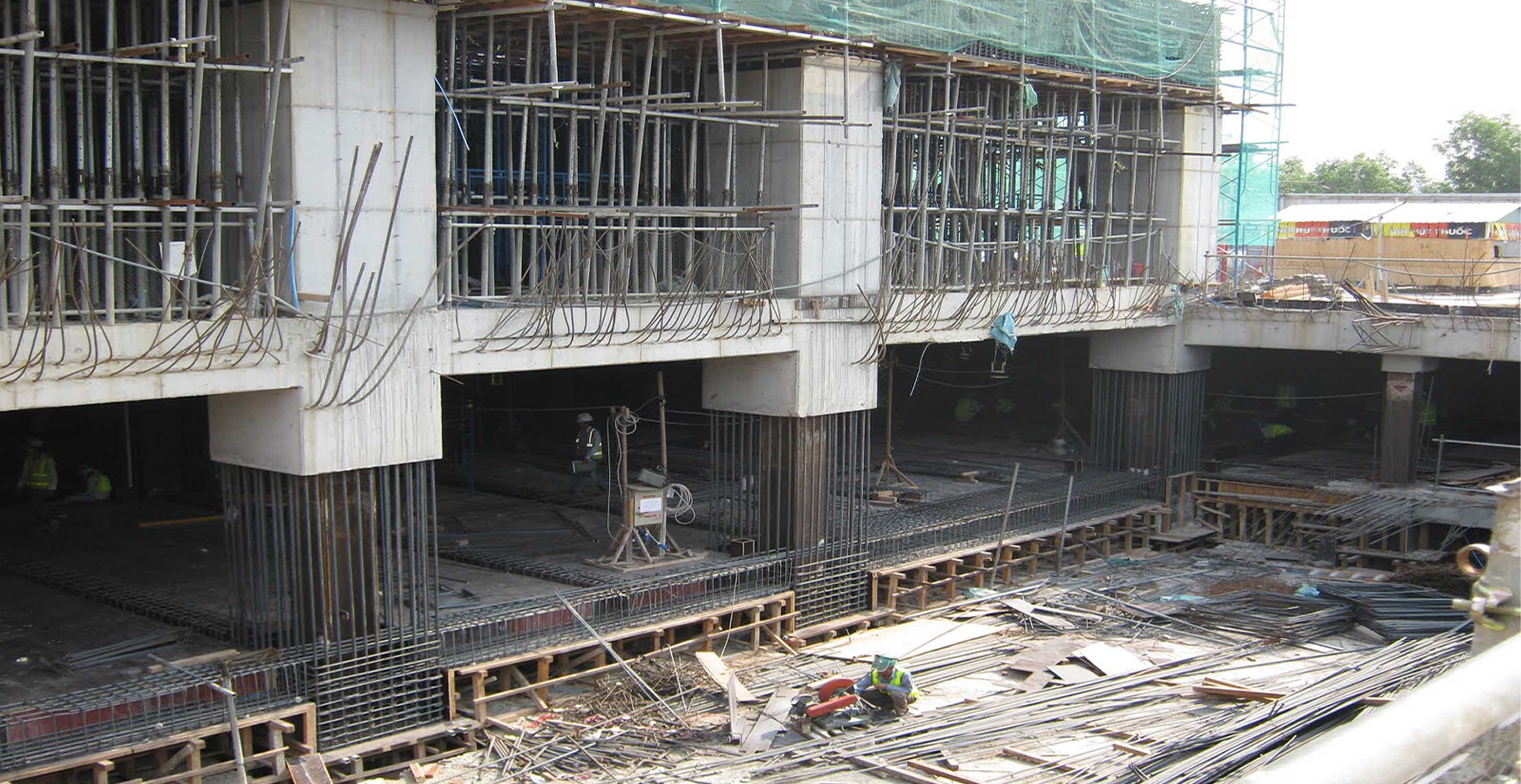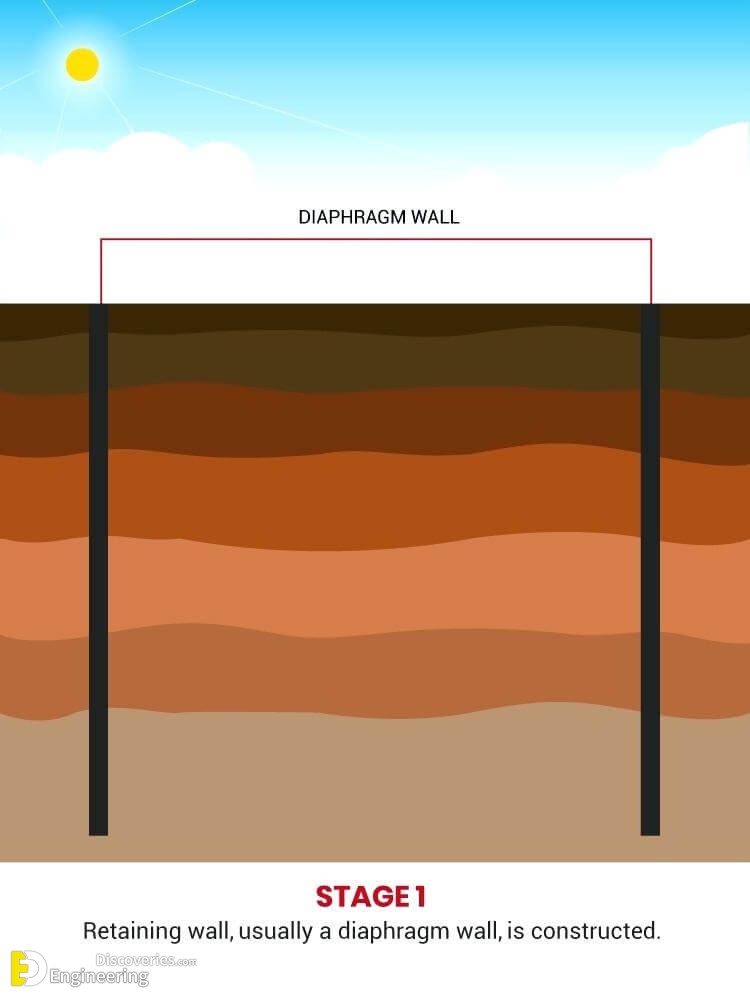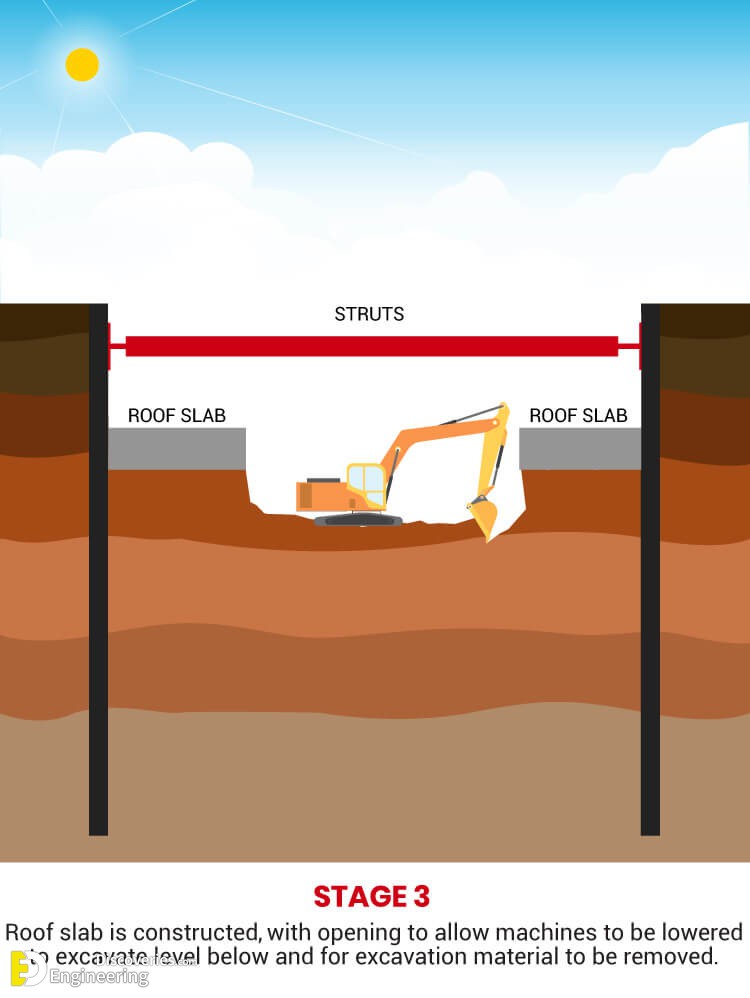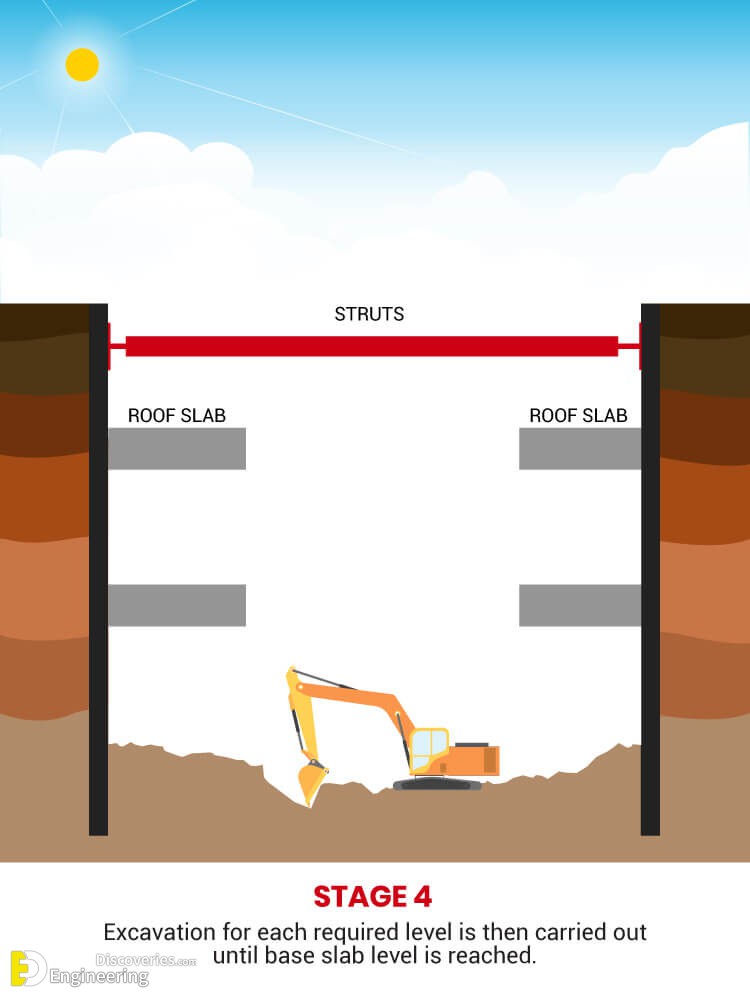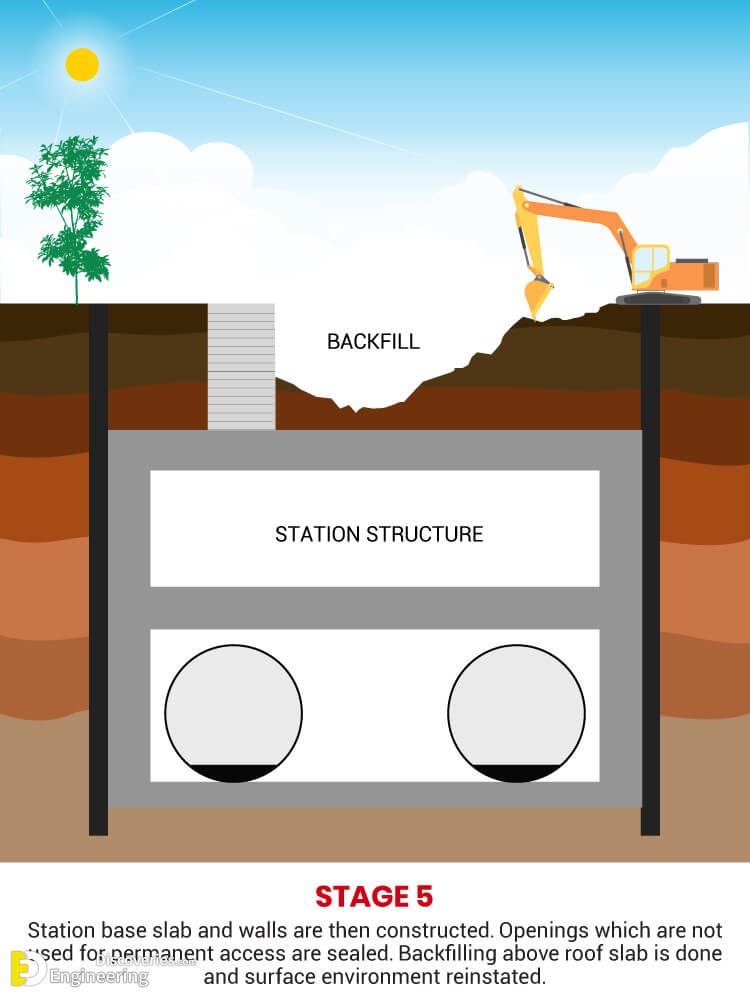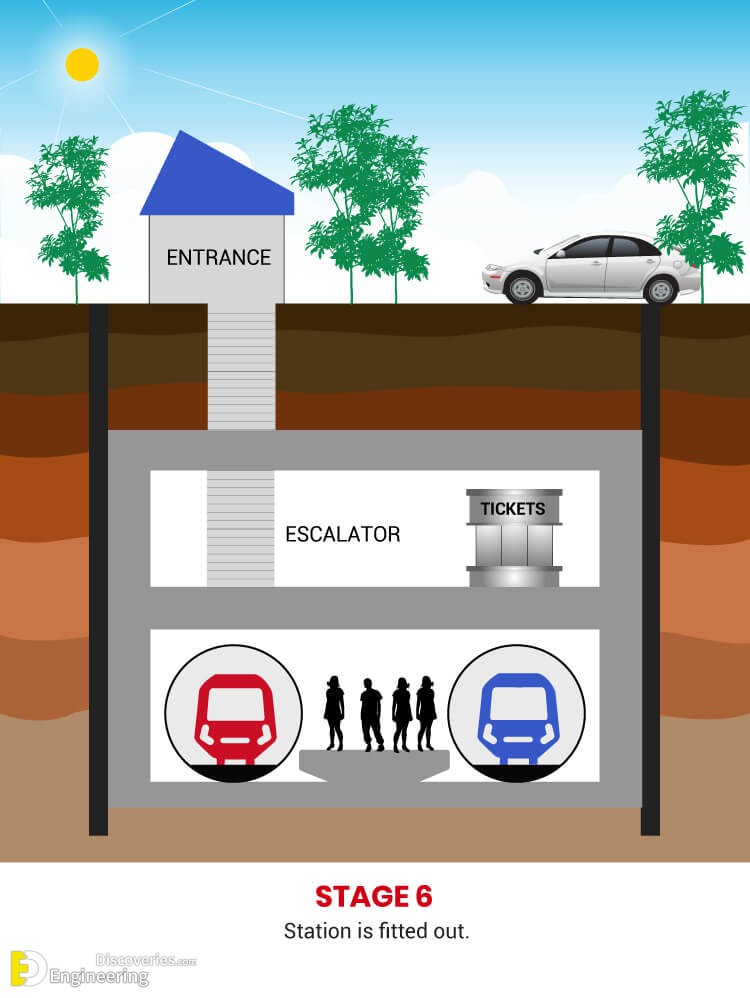Introduction
Conventionally building having basements are usually built by bottom up method.In simple words , stage of construction is from bottom of sub-structure to to top of superstructure.Gigantic civil engineering projects usually have constraints of time and working space.So we have to follow the reverse of this conventional procedure.We call it “Top down construction method” which means we go from top to bottom.I will try to explain it through various aspects and photographs.
What is the reason for selecting Top Down Construction?
1- Distance between boundary wall of existing building and building to be constructed is too close and possibility of soil collapse is too high.
4- This method is usually preferred for tall buildings with deep basements , underground car parks , underpasses and metro railway projects.
3- If water table is too high in area where building has to be constructed.
2- This method is preferred for buildings having two or more basements.
Construction Procedure
Stage 1: Retaining wall, usually a diaphragm wall is constructed.
Stage 2: Excavation to just blew the roof slab level is done, with struts installed for support.
Stage 4: Excavation for each required level is then carried out until base slab level is reached.
Stage 5: Station base slab and walls are then constructed. Openings which are not used for permanent access are sealed. Backfilling above roof slab is done and surface environment reinforced.
Stage 6: Station is fitted out.
Disadvantages

